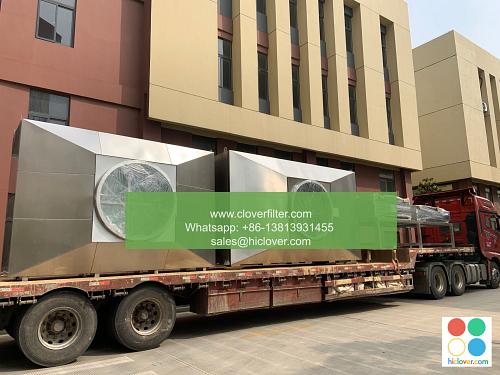Air Filter Troubleshooting: A DIY Approach

Air filters play a crucial role in maintaining the air quality and efficiency of our heating, ventilation, and air conditioning (HVAC) systems. A dirty or clogged air filter can lead to reduced airflow, increased energy bills, and even damage to the system. In this article, we will discuss the importance of air filter maintenance and provide a DIY approach to troubleshooting common issues.
##
Why Air Filter Troubleshooting is Important
Regular air filter inspection and maintenance are essential to ensure the optimal performance of your HVAC system. A clean air filter can improve indoor air quality, reduce energy consumption, and prolong the lifespan of the system. On the other hand, a dirty air filter can lead to allergies and respiratory problems, increased energy bills, and even system failure.
##
Common Air Filter Issues
Some common issues that may require air filter troubleshooting include:
* Reduced airflow: A dirty or clogged air filter can restrict airflow, leading to reduced system performance and increased energy bills.
* Increased energy consumption: A dirty air filter can cause the system to work harder, leading to increased energy bills and reduced system lifespan.
* System failure: A clogged air filter can cause the system to overheat, leading to system failure and costly repairs.
* Indoor air quality issues: A dirty air filter can lead to poor indoor air quality, exacerbating allergies and respiratory problems.
##
DIY Air Filter Troubleshooting Steps
To troubleshoot common air filter issues, follow these DIY steps:
1. Inspect the air filter: Regularly inspect the air filter for dirt, dust, and debris. Check the filter for any signs of damage or wear.
2. Clean or replace the air filter: Clean or replace the air filter as needed. Use a vacuum cleaner or soft brush to gently remove dirt and debris.
3. Check the filter size and type: Ensure that the air filter is the correct size and type for your HVAC system.
4. Check for air leaks: Inspect the air ducts and vents for any signs of air leaks or damage.
5. Check the system’s airflow: Use a anemometer or airflow meter to measure the system’s airflow.
##
Application Areas for Air Filter Troubleshooting
Air filter troubleshooting is essential in various application areas, including:
* Residential HVAC systems: Regular air filter maintenance is crucial to ensure the optimal performance of residential HVAC systems.
* Commercial HVAC systems: Commercial HVAC systems require regular air filter maintenance to ensure optimal performance and minimize energy consumption.
* Industrial HVAC systems: Industrial HVAC systems require regular air filter maintenance to ensure optimal performance and minimize downtime.
* Air purification systems: Air purification systems require regular air filter maintenance to ensure optimal performance and effectiveness.
##
Conclusion
Air filter troubleshooting is a crucial aspect of maintaining the optimal performance of our HVAC systems. By following the DIY steps outlined in this article, you can identify and resolve common air filter issues, improving indoor air quality, reducing energy consumption, and prolonging the lifespan of the system. Remember to inspect and maintain your air filter regularly to ensure the optimal performance of your HVAC system. Whether you have a residential, commercial, or industrial HVAC system, regular air filter maintenance is essential to ensure optimal performance and minimize energy consumption. You haven’t asked a question or provided any context. What would you like to talk about?

